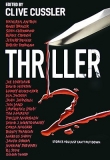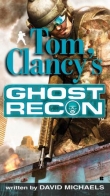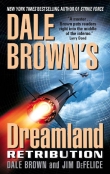
Текст книги "Ghost Fleet: A Novel of the Next World War"
Автор книги: P. Singer
Соавторы: August Cole
Жанр:
Триллеры
сообщить о нарушении
Текущая страница: 28 (всего у книги 37 страниц)
Kahuku, Oahu, Hawaii Special Administrative Zone
Her mind wanted her to sleep, but for the first time in weeks, her body wouldn’t let her. The stims lasted longer than normal because she’d been without them for so long.
It was so damn frustrating. Before, it had been her body that craved sleep and her mind that couldn’t allow it. More frustrating was the fact that Duncan had told her to catch some sleep. She knew he was trying to be kind, that the team clearly admired her for making it this far, but it just reminded her once more that they didn’t need her. Every minute, every hour, every day since the attack, she’d been necessary. She’d had to produce the next op plans, give the final orders, and make the toughest calls, some of which meant that sleep would bring back ghosts who would haunt her forever. But now she knew she was useless, just excess baggage for the SEALs.
So she waited under her blanket, sweating, with nothing more to do than pick pieces of the gummy stims from her teeth.
She heard a slight rustle and swung her rifle; no one would get the drop on her twice. It was Duncan this time. He motioned her to follow him to the observation post the team had set up on the perimeter, just on the edge of the brush. It had a clear view out, overlooking the golf course and the resort beyond. Oblivious to their presence, a threesome played on the fourth hole of the Fazio-designed course; clearly they were high-level officers or dignitaries, as two armed escorts followed in a second electric cart commandeered from the resort.
“So this was the unit that got your guys?” said Duncan, hooking her up into the tactical-glasses rig.
Conan nodded, taking in the full-enhanced scene as the system filled the panorama with red and blue icons, this time many more of them. The team had certainly been busy while she was picking her teeth.
“We never learned which unit, but they were good,” she replied. “Too good,” she added, giving credit where credit was due.
“You’re owed some payback, then.”
“How soon?”
“Three minutes good enough for you?”
“Typical man, but it’ll have to do.”
She watched and waited as the team finally started to show their nerves, checking and rechecking their weapons. Duncan kept his binoculars trained on the little robot still affixed to the tower that would be their relay station.
“Okay, mission clock is good, open the comms link,” said Duncan.
A voice came through their earpieces, modulated from the digital encryption, but recognizable as having a slight Latino accent. “Nemesis, this is Longboard. Authenticate Zulu, one, bravo, two, three, x-ray, four, two, golf, golf, five, seven, papa, delta, Mike, six, one, eight, Mike. Counter-authenticate with match code Polski.”
Peaches began the receipt code, speaking in Polish. The language’s unique combination of Latin and Greek diacritics gave it thirty-two letters in total, and the letters that were modified with glyphs were almost incomprehensible to computer-decryption algorithms.
“Ś, jeden, pi, ą, ź, ztery ń, siedem, ę, szesna, cie, pi, ł, dwana, cie, ż.”
“Roger, Nemesis, match code received. Quick hit human confirm, query mission commander: Best pizza near your home, over?”
“Gino’s, New York – style, over,” Duncan said quickly into the comms net. He turned to Conan. “They give you five seconds to outrun any algorithm guessing. Good thing they didn’t ask favorite Mexican or we’d have been cut off. Too many choices.”
“Confirmed, Nemesis,” the voice said. “We’ll order out for you, over.”
“We’d prefer your special delivery today, over,” Duncan replied.
“Affirmative. Any updates to the targeting data, over?”
“None, all active and confirmed,” Duncan said. “We have a small unit out golfing near us, but we don’t think they’re worth your while. We can take them on our own if it comes to match play, over.”
“Roger that, Nemesis. Standing by for authorization, over.”
Duncan looked at Conan, his expression and tone serious for once. “Major, I can’t even begin to understand what you’ve been through, but… I just wanted to say how much we respect it, what you had to do.”
Conan’s face remained impassive.
Duncan, knowing not to go any further, changed tack. “You know why we chose Nemesis as the call sign?”
“Greek god of trouble,” she replied.
“Almost. A goddess. Technically, the goddess of vengeful fate; her name translates as ‘to give what is due.’ That’s us, but in this case, I think you’re due the privilege of giving the order.”
Conan just nodded and said into the microphone, “Longboard, this is Nemesis, you are cleared hot… and may all our enemies die screaming.”
Duncan smiled, but then he saw her face. It was no longer an expressionless mask. She truly was Nemesis.
Admiral Zheng He, Four Hundred and Fifty Miles Southeast of Kamchatka Peninsula
At this moment, Admiral Wang felt that the flagship’s windows on the bridge had the best view of the war. And he could see nothing except the line where the blue water met the horizon.
Everything was happening beyond that horizon, out of sight. He had enemies waiting for him well beyond that horizon but no sure way to find them. He had weapons that could reach well beyond that horizon but no sure way to aim them.
He could sense the crew was discomfited by the absence of vital information; they had expected it would always be there, as certain as the stars. The satellite signals had gone down, the long-range radio was jammed, and the network-data links were worse than severed – they were feeding the crew information and navigation positions that were clearly in error. All the more reason for Wang to exude calm.
It was as it should be, part of him felt. This was naval warfare as it had been for centuries, not as it had been imagined for the past few decades, an organized and predictable exercise with defined and computable odds. If he was going to measure up to his ship’s namesake, it would be on a day just like this.
“Show me the last reported positions and scenarios three and four for distance traveled since contact lost,” he instructed a young officer.
The screen displayed the potential locations of the enemy task forces. For their Arctic force, there were not many choices. At some point, they had to come down through the Bering Strait. Yes, they could certainly continue on to the Chukchi Sea and harry the Russians on their northern coast, but then it wouldn’t be his problem.
“ ‘Ponder and deliberate before you make a move.’ ”
He recited the instructive quote from The Art of War aloud, more for himself than for the bridge crew, though it was good for their morale, he thought, to see their commander in conversation with the great master. They kept silent, knowing not to interfere with his thinking.
The real question was about the southern force of older ships. By this point, they could almost be off their port of Anchorage. Would they lie in wait there? Or would they risk darting down the Aleutian Islands, perhaps to effect a linkup?
Mentally, he went through the priorities, stating out loud Sun-Tzu’s rankings once more.
“ ‘The highest form of generalship is to balk the enemy’s plans; the next best is to prevent the junction of the enemy’s forces.’ ”
That was certainly what Hainan would want. The integrity of the force and, indeed, the alliance with the Russians would be held by keeping his task force positioned to block that passage and prevent the juncture of the two small American fleets.
“ ‘The good fighters of old first put themselves beyond the possibility of defeat, and then waited for an opportunity of defeating the enemy.’ ”
He preferred this advice about patience to General Wei’s quote about waiting by the river. It was like Wei to choose the less apt quote, but he was still right. The Bering Strait was not a river, but the effect would be the same. They could simply wait for the American forces to enter the strait and be channeled into their arms.
And yet patience was like any other weapon: it had to be used properly or it would backfire on its owner. And patience was not the weapon his foes would be using; he was sure of that. It was the one thing he could be certain of concerning the Americans somewhere across that horizon. That, and that they had to know their moves north had likely been tracked up to this point.
“ ‘All warfare is based on deception… When we are near, we must make the enemy believe we are far away; when far away, we must make him believe we are near.’ ” Deception, he realized, would be the Americans’ weapon of choice.
He turned to face his aide so that what he said next would be captured for posterity by the aide’s glasses. These words would decide how history would remember him. He would be either the fool who abandoned his post and was shot for it or the great admiral who divined the enemies’ ruse and ended the war by appearing out of nowhere right behind them.
“We shall head south, full steam. The surface task force shall proceed in a sweep arc forward, keeping the carriers protected. I want passive sensors only, though. If we are blind to their presence, I want them to be blind to ours. When in range of Hawaii, the carrier’s attack squadrons shall launch with anti-ship strike packages even if targets are not yet acquired,” Wang said. He smiled to show his confidence in what he knew was a gamble. “As Master Sun advised, ‘Never venture, never win’!”
He hoped the great strategist of old was right one last time.
Kahuku, Oahu, Hawaii Special Administrative Zone
The tactical view showed Conan a blinking yellow light on the blue Z icon out to sea. They waited several minutes for whatever it was indicating to arrive.
Then there was a sudden roar overhead, almost like an airborne locomotive. A massive explosion erupted miles away, almost certainly at the old Wheeler Army Airfield, where the Directorate had a mobile search radar the SEALs had marked coming in. Her tac-view showed one of the red icons flash with a yellow overlay. Then another wink, and another round of explosions: a mobile Stonefish ballistic-missile launch site in Waialua to the west, the firing pattern prioritizing any mobile targets before taking out the fixed sites.
They watched below as the golfers stood confused; one stopped in midswing and threw himself to the ground. After figuring out the fire wasn’t aimed at them, they piled into the electric cart and drove off toward the resort complex.
“Yes, that’s it, boys, pack it in. You’re shit golfers anyway,” Hammer said.
The firing continued above them, a whooshing sound every six seconds, some followed by an explosion close, others in the distance. More and more of the array of red icons began to blink yellow. Below them, the base became a beehive of activity. Two of the helicopters on the tennis court began to spin their rotors.
“Come on, come on,” Duncan whispered, starting to grow antsy.
“Nemesis, this is Longboard,” the comms link crackled. “Verify friendly position Augusta, over.”
“Longboard, Nemesis, affirmative,” said Duncan. “And don’t leave a scratch on that comms tower or there’ll be hell to pay, out.”
Again, a wait of minutes. The rail-gun rounds moved at 8,200 feet per second, but they had almost two hundred miles to travel. Then another whooshing sound came in, this time almost upon them, and the tennis courts disappeared in a massive cloud of dirt and fire. Several smaller explosions followed as helicopters and vehicles just beyond the blast site began to cook off. Then another whoosh, and a series of tents set up around the golf course’s clubhouse as a command complex disappeared. Six seconds later, a third rail-gun round hit the parking lot, leaving a hole the size of a football field where the unit’s motor pool had been. The team was well beyond the strike zone, but they still felt the pressure in their eardrums change and their stomachs turn at each of the explosions.
Duncan scanned the complex with his binoculars and saw that the tower was still standing, the tiny robotic lobster still clinging on.
“Longboard, Nemesis Six. Confirm targets serviced and communications link strong. Nice shooting, over.”
“Thank you, Nemesis. We aim to please, out.”
The strikes began again, the locomotives rushing by every six seconds like clockwork, some directly overhead, some at a distance. Then the intervals between strikes began to shift, first to twelve seconds, then to eighteen. Conan panned her view and saw icons on neighboring islands starting to flash. Maui, then the Big Island, even Lanai. She’d been so focused on her own fight, she hadn’t known what was happening on the other islands.
Duncan brought her attention back. “Time for the seaside fireworks.” He pointed off to the coast just as a flash of light about five miles away rose from the ocean and streaked into the clouds. A few seconds later there was a flash above, followed by the sound of a distant explosion, and debris started to rain down.
Conan’s visor said those were AIM-9X Sidewinder missiles fired by the Orzel using a system developed by the Navy’s Littoral Warfare Weapon program; it allowed the heat-seeking missiles, which were normally carried by fighter jets, to be ejected underwater from the submarine’s torpedo tubes using gas pressure and a watertight capsule and then launched into the air.
“That’s our ride,” said Duncan. “Never a good idea to park your combat air patrol above a submarine full of pissed-off Poles who haven’t won a war in a few hundred years.”
Lieutenant Nowak, lying prone in the dirt just a few meters away, smiled at Conan, gave her a thumbs-up, and then flipped a middle-finger salute at Duncan.
Two more streaks shot up from the water, and another shower of flame and sparks appeared behind the veil of the clouds. The visor registered them as formerly being Chengdu J-20 fighter jets.
The waiting stretched into almost an hour. They watched as the Directorate troops began to sift through the rubble, pull out bodies.
“Don’t get too comfortable,” Duncan whispered. “Peaches, tell Butter that sharing is no longer caring.”
“Sir?” Lieutenant Nowak asked.
“Switch the lobster to jamming mode.”
There was no immediate change in the activity below, but soon Directorate troops paused, awaiting instructions that would not come.
Another cluster of blue appeared in the tac-view on the horizon. As it grew closer, icons branched off.
“Major, I think it’s time you stopped being the only Marine in this island paradise,” he said.
She tried to say something flip back, but she couldn’t. All she wanted was to see them. As the icon grew closer, she flipped up the tactical rig. Duncan waited for her to tear up or something, but her face had returned to its usual impassive mask.
With the naked eye, they looked just like dots in the distance. Then the faint chop of blades could be heard. The flight of six low-flying Marine Corps Osprey tiltrotors slowly drew into view. They were flying incredibly low to the ocean, far below what Conan had been taught to do as a trainee back at New River. Clearly, they were trying to stay below the radar to the bitter end.
Now the Directorate would feel real fear. She wondered what Finn would have thought of the scene, and then she pushed that idea away.
“Shit,” Duncan said. “They’re waking up.”
He pointed to a small quadcopter taking off from Kuilima Bay, apparently protected from the first rail-gun strikes by the shadow of the hotel buildings.
“Break-break!” Duncan said into the radio, telling everyone on that frequency this was a priority message. “Ares Flight, Ares Flight, this is Nemesis Six. Heads up, they have a quad drone in the air.”
They heard only a crackle of radio static.
“Longboard, this is Nemesis, we can’t raise Ares Flight,” Duncan said into the secure link to the ship hundreds of miles away. “Can you let them know a quad drone is headed toward them from the east, over.”
“Wilco, Nemesis,” replied the radio, both parties knowing the jury-rigged game of telephone likely wouldn’t work in the heat of battle.
One of the Ospreys splashed down on its belly into Turtle Bay, a few hundred feet from the beach, then flipped across the water, parts breaking off.
“I didn’t see any weapon strike,” Conan said. “Their propellers just started to feather; fuel or engine trouble of some sort.”
The rest of the flight kept going, beginning to hover above the fairways on the far side of the golf course complex, the section designed by Arnold Palmer.
“Shit, they still don’t know about the drone,” said Conan.
As the lead Osprey touched down over the green of the first hole, the Chinese quadcopter popped up from the swirl of smoke around the destroyed tennis courts and fired a missile. The tiltrotor aircraft pulled up quickly, trying to dodge the missile. A Marine cartwheeled out of the open rear ramp from forty feet up, clutching his rifle the whole way down until he slammed onto the second hole’s men’s tee box. The quadcopter’s missile hit the aft fuselage near the horizontal stabilizer, causing the heavily loaded aircraft to swing wildly and then crash into one of the condo units overlooking the fairway.
The second Osprey in the flight, hovering just behind, pivoted. As the aircraft turned its back to the quadcopter, a gunner fired a .50-caliber machine gun mounted in the Osprey’s rear ramp. The aircraft turned in its hover, and the arc of red tracers edged closer and closer to the quadcopter and then shattered it in a small explosion. The Osprey then pivoted back and touched down on the golf course. Marines poured out the ramp onto the fairway grass. They immediately started to take small-arms fire from the porch of a townhouse that Directorate troops had been billeted in. As the Osprey’s propellers tilted forward and pulled the aircraft out of its hover, a missile arced in, fired from the main resort. The aircraft’s defensive flares fired, decoying the missile’s seeker head and triggering its proximity fuse, causing an explosion a few hundred feet away, but shrapnel slashed the right engine. One of the massive blades broke off and knifed into the Osprey’s fuselage just behind the cockpit, and an explosion broke the aircraft in two.
Conan tracked the missile trail back and saw two Directorate troops just at the edge of the main resort’s pool complex reloading an FN-8 man-portable missile system.
“Time for us to get down there and help out,” said Conan, checking her rifle and rig.
The fourth Osprey in the line exploded; machine-gun fire from another townhouse had hit a fuel tank. The Marines on the ground popped smoke grenades and the swirling white smoke added to the confusion.
Duncan shook his head. “No, Major, that’s not our fight. We’re to stay put and coordinate fires. I know it’s not what you want to hear, but those are the orders. Mission comes first.”
“Not this time, not for me,” Conan said.
She took off toward the resort at a jog. Duncan let her go. She was no longer essential to the mission.
USS Zumwalt Ship Mission Center, One Hundred and Eighty Miles Off the North Shore of Oahu
The view was majestic in a way, the columns of black smoke rising above the green landscape, the peaks of the Waianae mountain range in the distance. Then the image fizzled and the screen in the ship mission center went blank.
Captain Jamie Simmons swore under his breath. The live video feed from the SEAL team labeled Nemesis had to be considered a luxury, not a requirement.
“Did we lose them or just the connection?”
“Jamming, sir. We’re working it,” responded the communications officer.
Simmons took in the scene around him. It was a sign of how different this ship was that the best place for a captain to be in the midst of battle was not on the bridge but in a windowless room. Looking down from the second level of the ship mission center, he could see each of the LCD screens that paneled the walls displaying the various systems’ status while in the middle of the room, a holographic map projected the topography of the island of Oahu, the various targets and suspected enemy formations overlaid with constantly updating digital red dots and triangles.
He checked the screen for the SEAL fire team’s footage of the strikes, but it was still blank. Still, the mission moved on smoothly without it. The anxiousness he felt at that one missing piece of data flow was a reminder of how quickly people took for granted the sea of information they floated in. He only hoped that being thrown back into the dark would be even more disorienting for the Directorate generals and admirals who had enjoyed such data dominance so far.
“ATHENA, display task force with projected time to point bravo.”
The holographic map pulled out, shrinking the island and projecting the rest of the task force several hundred miles behind them. The system predicted just a few hours of steaming time before the forces would tactically link, but those hours could make all the difference, not just to the success or failure of the assault but to getting the Z back under their air-defense umbrella. It was an honor to be the tip of the spear, but very lonely.
“We’ve got it back, sir.” The footage from the SEAL fire team at Turtle Bay Resort reappeared on the screen. Then the video feed began to cycle though the other imagery sent from teams inserted around the island chain.
“Fidelity?” asked Simmons.
“We’re at forty percent,” said the communications officer.
“Not good enough. I don’t want to risk any more civilians than we have to,” Simmons said, knowing that some would become casualties in any event, “and I damn well don’t want to stay powered down any longer than we have to if we’re just shooting wild.”
That was the more disconcerting part, having the ship essentially motionless, the engines at minimal turns solely to hold the ship steady. Conceived as Drift Ops, this approach was meant to both maximize power to the rail gun and make the Z an even more difficult target to detect. Ships were always moving, it was assumed, so a radar signature the size of a dinghy just floating with the current would be filtered out by automated sensors. That was the hope, at least.
“Captain! One of the recon teams, Erinyes, outside Wheeler Army Airfield, is requesting another salvo,” said a weapons officer from the bullpen of desks below.
“The hangars were taken out as planned, but the runway strike was off target by a few hundred meters.” Simmons winced, hoping they hadn’t put one of the rail-gun rounds into the POW compound they suspected was on the base.
“ATHENA has updated the firing solution,” said Cortez, looking over at Simmons, who nodded. “Main gun, batteries release,” said Simmons. The weapons officer’s hands flicked at the touchscreen in front of him, giving ATHENA control over the rail gun’s targeting. The intelligent system did more than just aim the barrel of the rail gun at the target; it also interfaced with the ship’s propulsion and navigation systems to ensure that it stayed on target.
“Commencing power transfer,” said Cortez. “In five, four, three, two —”
The tactical action officer broke in. “Viper, Viper, Viper. ATHENA is reporting two, no, there’s three YJ-12 cruise missiles in the air.”
The YJ-12 supersonic anti-ship missile carried a four-hundred-and-fifty-pound warhead and could go Mach 4. More important, in addition to their radar, the missiles had imaging seekers, so they could be fired off blind and sent on a hunt for targets in a radius of two hundred and fifty miles, roughly the same range as the rail gun.
“Cease fire,” said Cortez.
“No, proceed with the firing plan, XO,” said Simmons emphatically. “Either they’ll find us or they won’t. In the interim, we need to get in as many hits as we can.”
“Aye, Captain,” said Cortez. Simmons noticed him tapping the heel of his prosthetic foot, which he did when he got anxious. His voice boomed throughout the ship. “This is the XO. Batteries release. Switching to auxiliary power in three, two, one. Mark.”
A warning siren blared throughout the ship. “All hands, the ship is on auxiliary power.”
The room’s LED lights flickered twice then returned to life, powered by their own local batteries. But screens throughout the ship mission center went dark as key ship systems shut down. A low whine followed, giving the crew a sense of dread as the ship powered down.
“ATHENA, bring the tactical map up to air-defense view.” The holograph moved upward, displaying icons for three missiles now performing a search pattern, each moving back and forth across a sector farther and farther out from the island.
“Viper one and two are projecting away from us,” said the tactical action officer. Simmons and Cortez locked eyes. Their unspoken question was how much fuel the third missile would burn up in a search pattern before it found them.
“Viper three inbound, sir. I think it’s tracking us.” They watched as the curving search pattern of the missile shifted to a line running directly at the Z.
The ATHENA battle-management system began its targeting solution as it tracked the missile approach, and Simmons watched the crew at the desks below steal glances at one another, wondering how long it would take the captain to power back up and activate the defenses.
He answered their concern, but not as they’d hoped. “Immediately after the final rail-gun shot, transfer power to the laser-point defense systems,” said Simmons.
“Firing sequence beginning in ten, nine…” said the weapons officer. He stood up in his chair, bracing himself slightly against the console he had been tapping feverishly.
“Viper three down!” said the tactical action officer. “Right in the wet. Looks like it ran out of fuel.” As he spoke, the ship began to hum, at first an almost imperceptible vibration, like you’d feel if you laid your hand on a track just before a train appeared.
A flash of movement caught Simmons’s eye in the darkened room. It was Vern, entering the mission center, eyes fixed on the screens showing the thermal image of the Zumwalt’s bow section and the rail-gun turret pointing accusingly at the shore. Then there was a series of sharp cracks, every six seconds, as six rounds raced toward the targets. With each shot, a flash engulfed the front of the ship in 1,100°F flames.
All eyes shifted to the video feed from the SEAL fire team targeting Wheeler. At the airfield, a pair of fighter jets raced down the runway. From the design, twin-engined and twin-tailed, they appeared to be J-31 Falcon Hawk strike fighters, each wing loaded with a YJ-12 anti-ship missile. The shells were moving too fast for the camera to pick up from afar, but the evidence of the rail-gun rounds’ arrival was immediate. So massive was the force of the explosions that even though the first fighter made it into the air, the shock wave tossed it onto its side and it fell back onto the runway, adding a fiery secondary explosion to the devastation.
“Sir, Erinyes reports target destroyed,” said one of the crew. “Says good hits. Moving to site Torrey Pines and will report back.”
“Now the real test,” said Vern.
Cortez looked over at her quizzically, somewhat lost in the information on his viz glasses. “Turning the system off is easy,” said Vern, smiling. “Getting it back on is the part that always worried me.”

![Книга [Magazine 1966-07] - The Ghost Riders Affair автора Harry Whittington](http://itexts.net/files/books/110/oblozhka-knigi-magazine-1966-07-the-ghost-riders-affair-199012.jpg)






